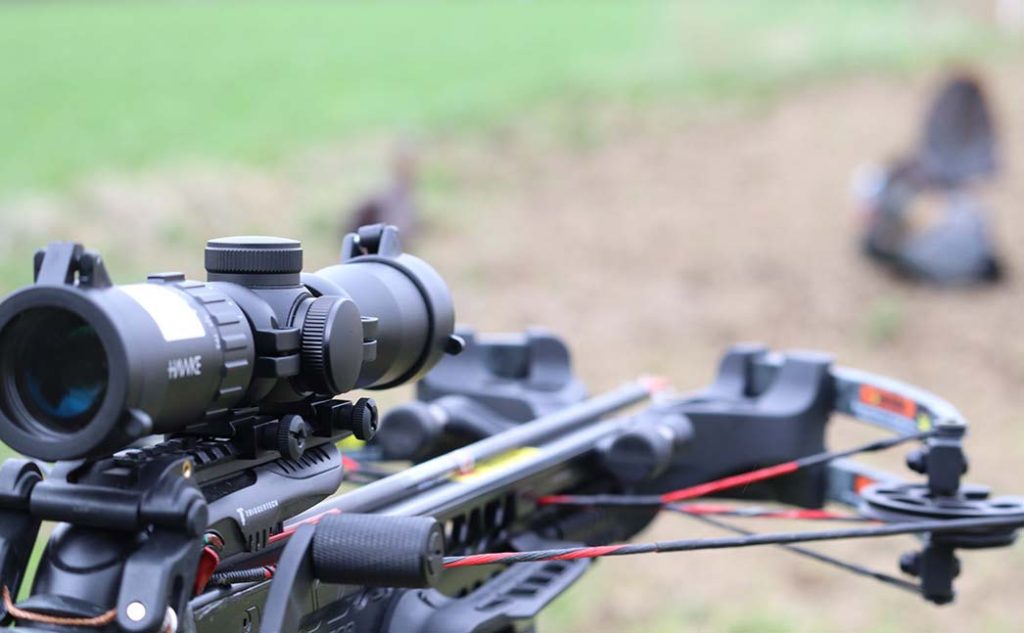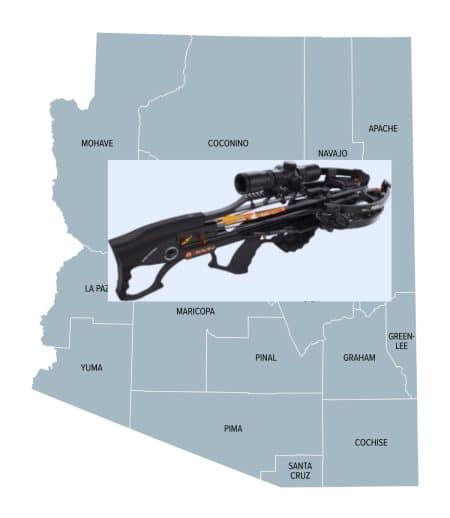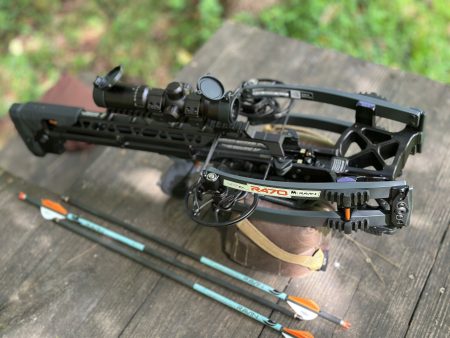There is nothing like that first cool, spring morning when you are heading to your blind after roosting a tom the evening before. The dew on the ground, the smell of fresh dirt, the peace and quiet.
As you set up your decoys by moonlight, the anticipation builds. You know a tom is close by and the minutes to sunrise keep clicking closer. You get situated in your blind, knowing you still have 20 minutes until sunrise. Just then, a tom lets off a gobble that wakes the woods. Two other close-by toms repeat this. They are all within hunting distance, and you know you are in the right spot.
As it gets closer to shooting light, you let out a few soft yelps from your best turkey pot call. The tom fires off again before you can even set the striker down. As the sun comes up, he pitches down. This is the moment you have been waiting for, you slowly place your finger on the trigger of your crossbow. Will your decoys get his attention? Was your calling good enough to seal the deal? Is your crossbow set up for turkey hunting?
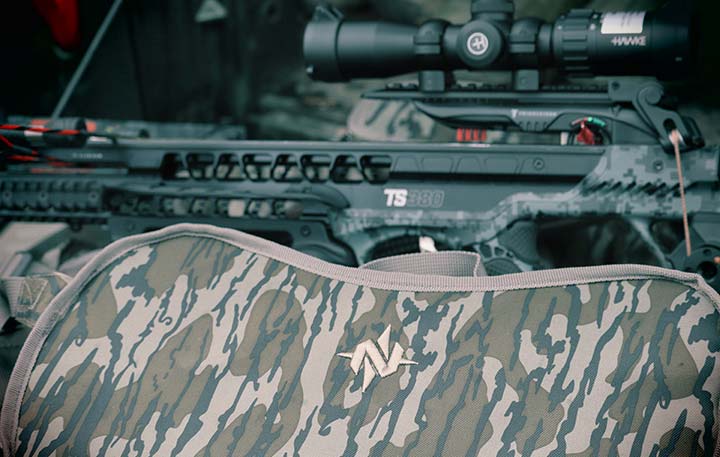
To Each Its Own
I have hunted turkeys with about every weapon that is legal in Ohio. Each has its own unique style. When it comes to the simplest, easiest and most effective way to hunt toms, I will always take my crossbow. Crossbows have several advantages over compound bows and firearms. For instance, if you happen to miss with a shotgun, the sound alone might scare off the turkey, where a crossbow strike is nearly silent. In addition, with a compound, you’ll need to draw back, which could create just enough movement for a nice tom to notice you. I could go on and on, but I am sure you get the idea. So, let’s dive deep into some of the must-have gear and tactics to help you use your crossbow to fill your turkey tag this year.
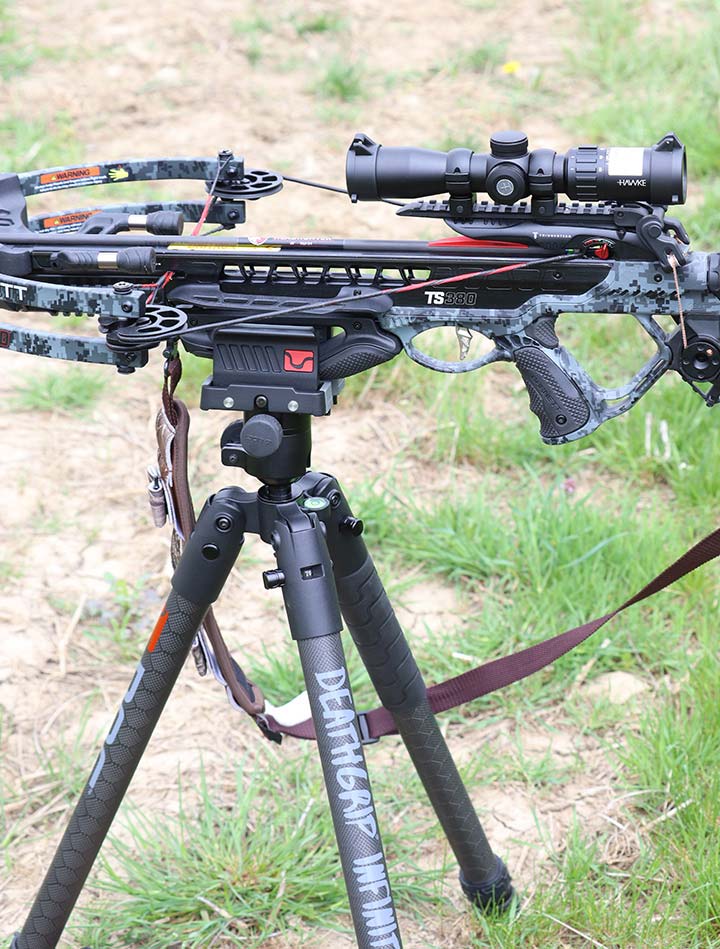
The Crossbow
Let’s start with the crossbow itself. I like the Barnett TS380. That’s because both my daughter and I can shoot it, and it is light enough to pack anywhere I want to take it. It has a collapsible stock and shoots 20-inch bolts. This makes it easy to maneuver around on the ground or in a blind.
I use a Hawke optics crossbow scope on top of my crossbow. Hawke makes a superior crossbow scope that has yardage marked out from 20 to 100 yards in the reticle. This takes the guesswork out of where to hold the shot. While on the topic of Hawke optics, I also recommended their rangefinder as one of the it is one of best rangefinders for hunting. This pair takes all the guesswork out of taking the shot.
On the front end of my 20-inch headhunter crossbow bolts, I run Rage hypodermics. This is one of the best all-around broadheads I have found on the market. Not only are they good for turkey, I have dropped several deer with the same broadhead. On the backside of my bolt, I use green nocturnal nocks. This allows me to always keep track of my arrow.
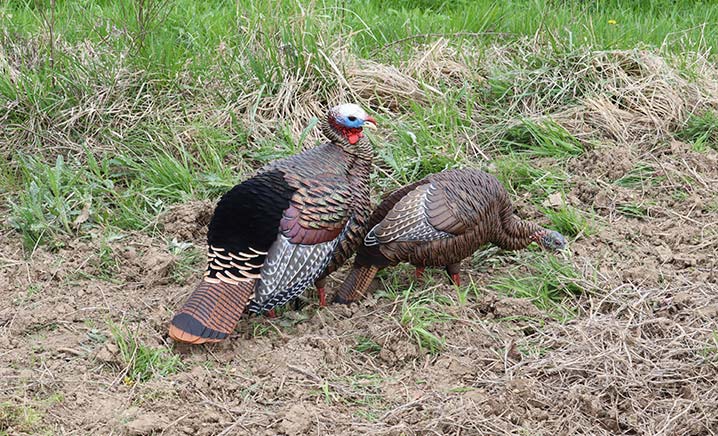
Setting Up
There are a few must-have things that make your turkey hunt easier and more enjoyable. I highly suggest a Bog pod deathgrip tripod. This is not like your grandpa’s tripod. This thing is built like a tank. It’s lightweight and holds your bow rock solid. I keep this inside my Bog grave digger ground blind. If you can’t tell, Bog makes great products for ground-blind hunting. I even use their ground blind chair. It makes waiting out those stubborn toms comfortable.
When it comes to decoys. there is only one company I trust and that is Avian-X. They make some of the most realistic decoys on the market. Keep that in mind when heading into the woods, especially on public grounds.
As far as camo goes, I use blocker outdoors finisher series camo. I like to use camo in my ground blind in case I need to leave there to stalk a gobbler. For a vest, I highly recommend the Nomad Outdoors Killin’ Time turkey vest. This thing has room for everything, even my snacks. It has specially made pockets for all my calls and even my thermacell. By the way, thermacells are a must in the turkey woods as the bugs come to life and serve as one of the best tick repellents.
As far as calls, I like to use any of the best turkey calls. When hunting out of a blind, my go-to call is a glass or glass-over-slate pot call. Good examples of these are Woodhaven’s cherry crystal or Esh custom calls glass flip-over call.

Scouting
When it comes to hunting turkey, especially from a blind, scouting is a must. There are many different ways to scout for turkey. The most basic is to scout from the road with a spotting scope or binoculars. Another form is to find a good spot to set up first thing in the morning and listen for gobbles.
To be successful, you should plan to do both of these styles of scouting several different times prior to season, especially if you plan to set up a ground blind. You will want to either be located where they are going to pitch down or where they want to be. Once I figure this out, I place my Stealth cam Fusion X cameras on this path to verify that I am in the right location.
If you are not hunting from a blind, another type of scouting is to roost birds the night before. To do this, I like to take my Woodhaven owl call and hoot just as the sun is setting. This is sure to get a shock gobble from any toms that are in the area. Once I have an idea of where the gobble came from, I look at my onX App to try to pinpoint the exact location. This is where I set up the following morning.
The use of hunting apps can be beneficial when it comes to hunting turkey. They can show you things such as landowners’ names and property boundaries. The apps even have a NWTF layer that shows turkeys taken from the area.
The last way to scout, if it is legal in your state, is by using a thermal optic. My go-to thermal optic is the Covert Optics ThermX HS1. This thermal is a workhorse. All you need to do is scan the trees as the sun goes down and it will give you the location of all the birds. It is also great for blood tracking and can even be used as a thermal scope for predator hunting. We all know how important predator control is for ground-nesting birds like turkeys.
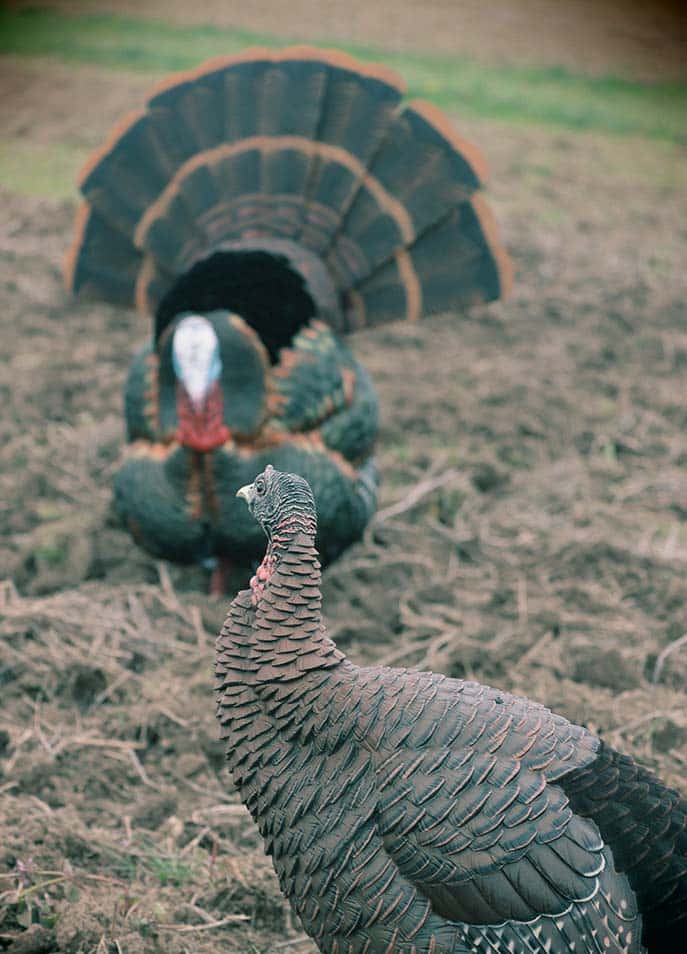
Good Tactics
Once your crossbow is set up and your scouting is done, it’s time to tag the boss tom in the area. There are a few different tactics I use when trying to fill my turkey tag. My favorite is to set up in the corner of a woods facing out into a field. I place two decoys about 30 yards in front of me. One of them is a hen laying down in a ready-to-breed position, then the second is a jake right behind her. This gives the impression that the jake is going to breed the hen—and that will bring in any nearby tom.
The next setup I like to use relies heavily on my scouting. If I cannot set up where the turkeys are roosting or at their destination, I like to set up between the two places. I will only know this information based on all my scouting. So, I will tuck into a fence row and place two or three decoys out in front of me. It is important that they are all facing the same direction and that they are set up going in the direction where the turkeys want to move. This aspect is important for the decoys to appear to be as realistic as possible.
I will place either two hens (one feeding, and one with her head up) or those same two along with a jake. A hen with her head down will give the impression all is well as that she is not on alert. These are the details that will help fill your tag.
Another great set up that has brought me much success is using a lone hen, usually positioned with her head down, feeding. I like to have her out in the open 30 yards or so away from me. With this set up, I will let out several light yelps every 20 minutes or so, and hopefully that draws in any searching toms.
Lastly, there are two separate times I will use a full-strut tom decoy. The first is early in the season when the toms are still sorting out the dominant tom in their area. A full-strut tom decoy will bring other toms in, with or without other decoys, because they are all looking for a fight. As the season goes on, I only use a tom decoy if I know I am hunting the boss tom in the area. A full-strut decoy may scare off other toms if they have been beaten up enough to avoid the others. With any decoys, it’s important to use the most realistic ones you can get. I will only use Avian-X decoys for this very reason.
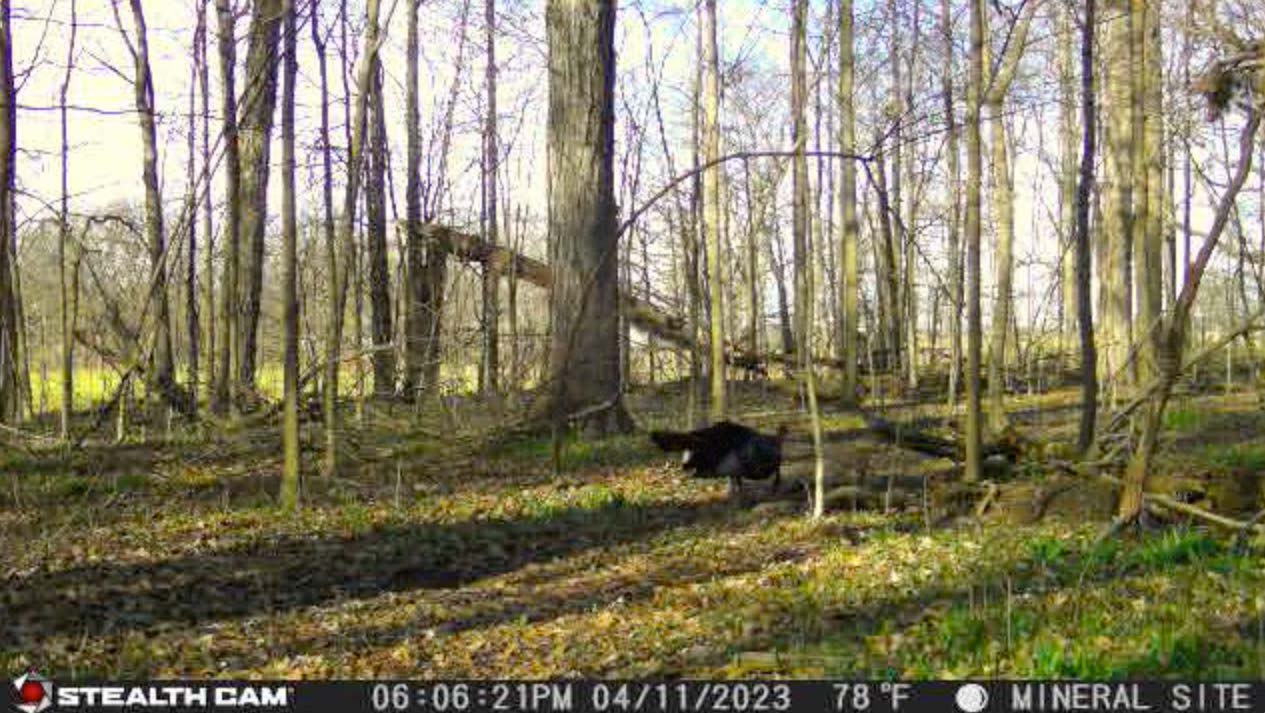
In Conclusion
It does not matter if you are a new hunter, a child or a veteran, turkey hunting with a crossbow has several advantages over a compound bow. The crossbow is silent, requires little movement and is compact. With the right equipment and a little scouting, you will be filling tags in no time. If you are in the woods and having fun, that is all that matters.
Per our affiliate disclosure, we may earn revenue from the products available on this page.

